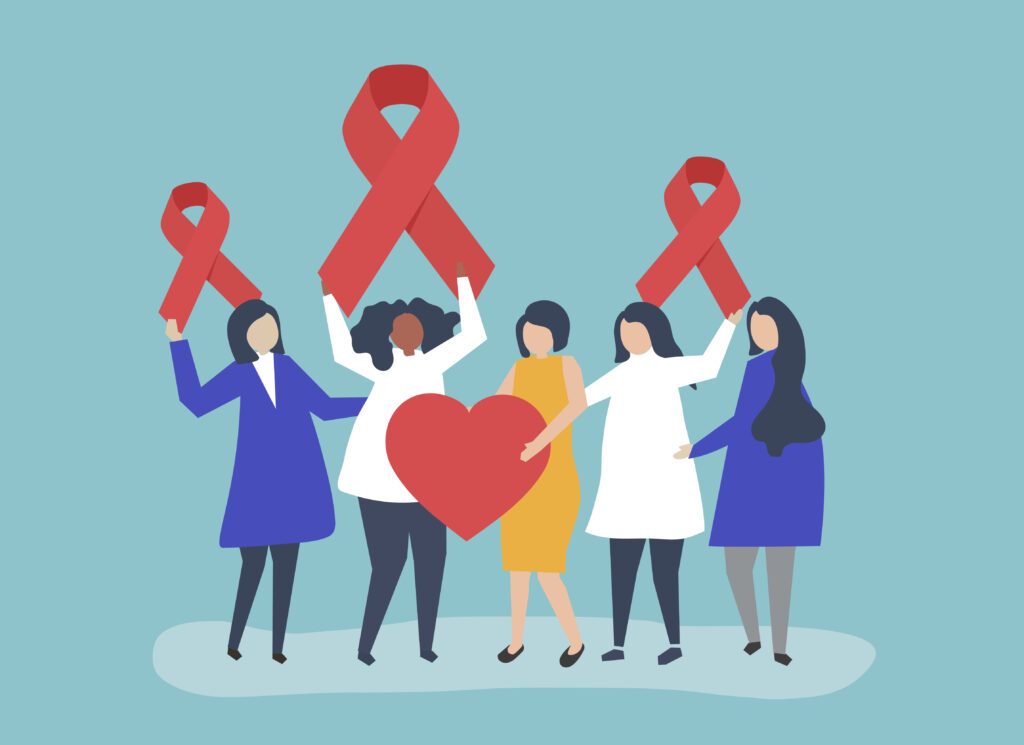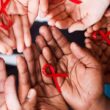HIV/AIDS community engagement
Together We Can Build Strength: HIV/AIDS and Community Involvement
Combating HIV/AIDS is a collaborative effort. In order to help persons living with HIV/AIDS (PLWHIA) and stop new infections, community engagement is essential. This cooperative strategy guarantees a more efficient response to the pandemic, empowers people, and supports advocacy initiatives. In the context of HIV/AIDS, let’s examine three essential pillars of community engagement: advocacy networks, peer support groups, and community-based organisations.
Table of Contents

Peer Support Groups: An Empowering and Companionship
HIV/AIDS community engagement
Peer support groups bring people living with HIV together to exchange stories, provide emotional support, and discuss obstacles related to the illness. These organisations offer a secure environment where people can:
- Diminish Stigma and loneliness: Feelings of shame and loneliness can be lessened by talking about experiences with like-minded people.
- Obtain Emotional Support: By giving people a forum to discuss their worries, successes, and frustrations, peer support groups help people feel like they belong.
- Learn Coping Mechanisms: Participants can discuss coping mechanisms, including as maintaining a healthy lifestyle and taking medicine as directed, for managing HIV and its effects on day-to-day living.
- Information and Resource Access: Peer support groups can help people find pertinent social services, medical services, and educational resources.
HIV/AIDS community engagement
The creation of a friendly, private space where people feel at ease talking honestly is essential to the success of peer support groups.
Advocacy Networks: Strengthening Voices for Transformation
HIV/AIDS community engagement
Advocacy networks are associations that strive to promote laws and initiatives that assist PLWHIA. These networks have a big impact on:
- Increasing Awareness: In an effort to lessen stigma and discrimination, advocacy organisations try to inform the public about HIV and AIDS.
- Influencing Policy: Networks try to get more money allocated to HIV research, treatment, and prevention from legislators.
- Encouraging Access to Care: The goal of advocacy work is to ensure that everyone has fair access to healthcare services by removing obstacles to it.
- Preserving Human Rights: Networks fight for the nondiscrimination, confidentiality, and privacy rights of PLWHIA.
HIV/AIDS community engagement
Diverse groups, such as PLWHIA, healthcare professionals, and community leaders, are involved in effective advocacy networks. Working together makes it possible to influence policy and bring about beneficial change in a more thorough manner.
Organisations with a community focus (CBOs): In the Front Lines of Healthcare
HIV/AIDS community engagement
CBOs are neighborhood-based, nonprofit institutions with strong relationships to the communities they serve. CBOs are essential in the context of HIV/AIDS because they are:
- Providing Culturally Competent Services: CBOs customise services based on their understanding of the specific needs and cultural settings of the communities they serve.
- Providing Services for HIV Prevention and Testing: Community-based organisations (CBOs) frequently offer HIV prevention services, including testing, counselling, and education, all within comfortable settings.
- Connecting People to Care: CBOs serve as intermediaries, establishing connections between PLWHIA and vital social services, mental health resources, and medical care.
- Building Capacity and Resilience: To address HIV and related issues, CBOs give communities access to leadership development opportunities, resources, and training.
HIV/AIDS community engagement
CBOs build trust and promote participation in HIV prevention and treatment programmes by frequently serving as the initial point of contact for those in need of information and assistance.
In conclusion, a potent combination
HIV/AIDS community engagement
In the battle against HIV/AIDS, the combined activities of CBOs, advocacy networks, and peer support groups produce a potent synergy. They guarantee that services are received by those who are most in need, push for systemic change, and offer crucial support for individuals. We can respond to the HIV/AIDS epidemic in a way that is both more compassionate and efficient by encouraging community engagement.


